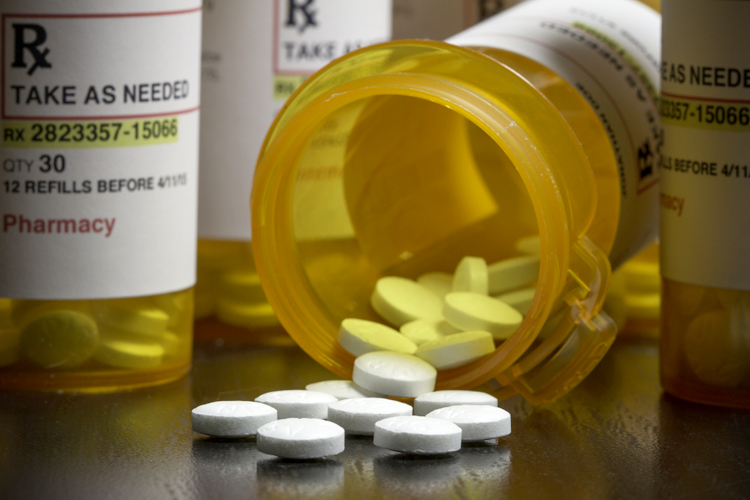Renda Bower knows well the cost of drugs to treat rheumatoid arthritis – her husband, son and daughter all have the painful, disabling autoimmune disease. And the family’s finances revolve around paying for them.
Even with insurance, Bower’s family last year faced $600 a month in copayments for the drug, plus additional payments on another $16,000 in medical bills racked up in 2016 when a former insurer refused to cover all the doses her 9-year-old daughter needed.
Bowers, of Warsaw, Ind., said her family tries to keep up with prices by cutting back on her children’s sports and extracurriculars and skipping family vacations. She also works as a part-time teacher.
But financially, it’s hard. “The cost should not be this high,” she said.
Wholesale prices for Humira and Enbrel, the two most commonly used treatments for rheumatoid arthritis, known as RA, increased more than 70 percent in the past three years.
Since the first RA drug came to market a decade ago, nearly a dozen have been added. If basic economics prevailed, RA treatments and patients would have benefited from competition. But, because of industry price-setting practices, legal challenges and marketing tactics, they haven’t. The first RA drug cost $10,000 a year. It now lists for more than $40,000 — even as alternatives have entered the U.S. market.
“Competition generally doesn’t work to lower prices in branded specialty drugs,” said Peter Bach, director of Memorial Sloan Kettering’s Center for Health Policy and Outcomes.
Humira is the world’s No. 1 prescription drug by revenue. AbbVie manufactures and markets the drug and is on track to reach revenue from the product of $17 billion this year.
Other RA treatments are also among the top 10 drugs by revenue sold in the U.S. Enbrel, made by Amgen, ranks as No. 3. Remicade, by Janssen Biotech, is fifth. Some RA medications are approved for other conditions, including psoriatic arthritis, Crohn’s disease and psoriasis.
About 1.5 million Americans have rheumatoid arthritis. The Bowers found some relief this year but not because prices dropped. Rather, Renda’s husband left his job at an engineering firm to work as a machinist at a medical device company that has an insurance plan with lower copayments. Her daughter was accepted into a clinical trial at Cincinnati Children’s Hospital. The trial covers the drug’s cost but not the associated expense of weekly travel, among other things.
Middlemen Benefit As Wholesale Price Rises
The complicated pharmaceutical supply chain in the United States means middlemen — such as pharmacy benefit managers (PBM) and, in some cases, hospitals and doctors’ offices — can gain financially by choosing more expensive drugs. That’s because PBMs usually get a rebate from the drugmakers on top of whatever profit they get from selling or administering the drug.
Those rebates often are based on a percentage of the list, or wholesale, price. So, the middlemen who get the rebates take in more money when drugmakers raise those sticker prices.
But who pockets the rebates? PBM firms, which oversee drug benefits for millions of Americans, say they share all or part of them with the insurers or employers who hire them. In some cases, the rebates go directly to specialty pharmacies, medical clinics or physicians dispensing the treatments.
The rebates rarely end up directly in patients’ pockets.
Those rebates affect the market in another way: They can make it harder for some companies to offer new treatments or they can thwart less costly rival products.
“We could give [our new drug] away for free and . . . it would still be more economically advantageous” for insurers and PBMs to send patients to Humira first, said Andreas Kuznik, a senior director at Regeneron Pharmaceuticals, at a conference examining the cost and value of RA treatments.
Thomas Amoroso, medical director for medical policy at Tufts Health Plan, said at the same March conference that he has found drug industry sales representatives to be persistent in tracking how their drugs are positioned on plan formularies.
If insurers decide to add a new, lower-cost drug as the preferred alternative, “our Humira rep would be knocking on our door next week and saying, ‘Hey, that rebate we gave you? We’re taking it back,’” Amoroso said.
The roundtable at which they spoke was part of an assessment of RA drug pricing convened by the Institute for Clinical and Economic Review, a nonprofit that evaluates the value of medical tests and treatments for insurers and other clients.
PBMs won’t disclose the rebates they provide to clients, but studies provide a clue. It’s a huge amount of money.
The Berkeley Research Group, a consulting firm that advises major employers, said that rebates and other discounts paid to insurers, PBMs and the U.S. government for brand-name drugs grew from $67 billion in 2013 to $106 billion in 2015.
Most RA drugs are a complex type of medication, called biologics, which are made in living organisms. Nearly identical copies of biologics are called biosimilars. They hold the promise of lower prices, just as generic drugs did for less complex medications.
While several biosimilar RA treatments have won Food and Drug Administration approval, including replicas of Humira, Enbrel and Remicade, most are tied up in court battles over patents. And those biosimilars that have made it to market are now the subject of new areas of legal challenge.
In mid-September, Pfizer filed what will be a closely watched antitrust lawsuit against Johnson & Johnson. The case alleges that J&J is using exclusionary contracts and the threat of withdrawing rebates to protect Remicade from Pfizer’s lower-priced biosimilar, Inflectra, which hit the market last winter.
J&J defends its contracts, saying they are “driving deeper discounts that will lead to overall lower costs.”


